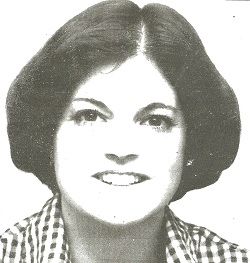Can Disabled People Be Political Activists?
/By Crystal Lindell
The world feels very broken these days – politically, economically and socially. Many of us already deal with broken bodies. Can people with disabilities do anything to fix a broken world?
The short answer is: Yes.
The longer answer is: Not just yes, but that we must.
While it can feel overwhelming to get involved in politics, even when you’re at peak health, there are a lot of ways you can fight back if you have chronic pain or other health issues that limit your capabilities.
Disabled people, including the chronically ill, bring a special expertise to political movements. For decades, we’ve been dealing with governments that often do not care about us.
That apathy was made especially apparent when the 2016 CDC opioid guideline was released. Our concerns about the guideline were ignored and many pain patients were subsequently abandoned by doctors and the healthcare system.
But it’s even deeper than that.
Disabled people learned first-hand that government regulators and our for-profit healthcare system do not actually care about anyone’s health. We were left largely on our own to fight off COVID. Not to mention how little the government does to make sure disabled people have access to basic necessities, as they make applying for government benefits nearly impossible.
Now though, oppression is moving outward. Groups that were traditionally more protected from horrible governmental policies are also noticing how bad things have gotten, because it’s starting to affect them directly.
What can disabled people do about any of this? Shouldn’t we just focus on our own lives for now?
That would be a mistake. In fact, it is right now, when things are changing so rapidly, that it is most important for us to pay attention and advocate for better conditions for ourselves and others.
The first step there is seeking out reliable news sources. In our current political climate, staying informed is, in itself, an act of resistance. While I understand the urge to check out of political news, it’s important to remember that it’s those who have information who have power.
This is made especially clear by the fact that people in power work diligently to limit our access to accurate information through censorship, distraction and propaganda.
Seeking and gathering accurate information is one way to fight back. Sharing it is also important. Communication is one of the foundations of political activism.
This column is an example. I’ve been advocating for pain patients for more than a decade. While I haven’t personally changed any legislative policy that I know of, I do know that I’ve had an impact on people’s lives – which is what political activism is all about. I have helped people cope with life under our draconian drug laws and crumbling healthcare system. Many readers have reached out to tell me as such.
Giving people practical tips for living day-to-day can go a long way toward saving lives. And telling them how you’ve coped with adversity yourself can be extremely important.
In our wellness-focused society, where health is often seen as a moral virtue, it can feel shameful to tell people about your health problems. But, in my experience, sharing our stories can be exactly the kind of thing other people need to hear.
If you can’t physically attend a protest march due to health reasons, that doesn’t mean you can’t be politically active. You can still donate to non-profits and advocacy organizations. If you’re not in a position to donate, you can help amplify their messages by sending emails, writing letters, sharing stories online, or even just talking to someone – all at little to no cost.
Personally, I have found it to be really important to dive in and help locally. I volunteer at a local cat shelter every week, but it doesn’t have to be something that formal. I also cook meals for my elderly grandmother, my mom and their caretaker, because I know it helps lift a burden for them.
Maybe you’ll find that you enjoy baking for a neighbor in need or checking on an elderly relative more regularly.
When we help others, we really help ourselves. Human souls yearn to be in service to others Our desire to serve and our inevitable need to eventually be served are what stitches all of us together on the planet.
Now is not the time to zone out and give up. Despite the physical battles many of us fight daily, we can fight back politically. More than that, we must.









